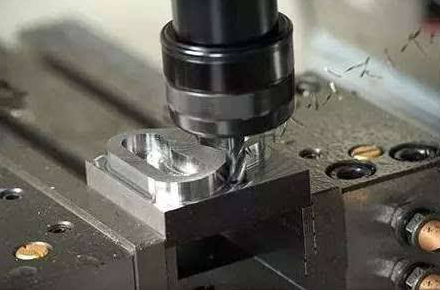How to Avoid & Stop Chatter in CNC Turning - Machining Chatter Causes, Types and Solutions | Dajin Precision
Machining chatter is a problem in CNC turning and milling process, affects the accuracy of manufacturing and shorten service life of machines, so how to avoid chatter is the priority we should consider. To find the solutions, figure out the causes is the first step.

What is chatter in CNC turning?
The CNC turning chatter is resonant vibration in the lathe or workpiece, which usually occurs in the turning process of slender shafts, thin-walled parts, and more. Cutting vibration usually occurs in the turning of slender shafts, thin-walled parts and so on. Once the vibration intensifies, there will be violent vibration with amplitude more than tens of μ m, usually accompanied by large noise. In the cutting process, vibration may exceed 100 μ M, which leaves obvious vibration scratches on the surface of CNC turning part, which is not allowed in finishing.
What causes chatter in CNC turning?
If the following three conditions exist at the same time, it will cause chatter vibration in turning operation.
1)The rigidity of the system including cutter is insufficient, resulting in low natural frequency.
2)The cutting process produces a large external force.
3)The frequency of the external excitation force is the same as the natural frequency of the processing system, and then resonance occurs.
Types of Chatter in Machining
- Whistle scream (high frequency): the machined surface is similar to wrinkled silk
- Horn (medium frequency): the surface of turning part is similar to fish scale
- Frog horn (low frequency): similar to scales, but with larger and gentle ripples
How to Stop Chatter in CNC Machining - Tips for Eliminating Machining Vibration
1. Reduce the cutting force to the minimum
(1) Use sharp blades
(2) Use a small tip arc radius when cutting into certain depth
(3) For boring and turning slender shaft parts with slender tool , apply 90 degree main deflection angle tool
(4) Use long and thin rod round milling cutter
(5) Plunge milling is often used in milling deep cavity with long and thin end milling cutter
(6) The face milling cutter adopts the unequal distance milling cutter with sparse teeth
(7) When boring the inner hole, use smaller cutter angle
2. Improve the static rigidity of the cutter bar
Use solid carbide or heavy metal cutter bar
3. Improve the dynamic rigidity of tools
Using passive damping tool rod
